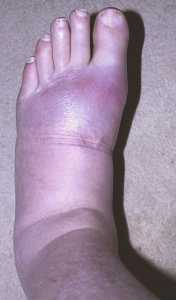MedicalResearch.com Interview with:
Erika L. Rangel, MD,MS
Instructor, Harvard Medical School
Trauma, Burn and Surgical Critical Care
Department of Surgery, Center for Surgery and Public Health
Brigham and Women’s Hospital
Harvard T. H. Chan School of Public Health
Boston, Massachusetts
MedicalResearch.com: What is the background for this study? What are the main findings?
Response: Although women make up half of medical student graduates in 2018, they only comprise a third of applicants to general surgery. Studies suggest that lifestyle concerns and perceptions of conflict between career and family obligations dissuade students from the field.
After entering surgical residencies, women residents have higher rates of attrition (25% vs 15%) and cite uncontrollable lifestyle as a predominant factor in leaving the field. Surgeons face reproductive challenges including stigma against pregnancy during training, higher rates of infertility, need for assisted reproduction, and increased rates of pregnancy complications. However, until recently, studies capturing the viewpoints of women who begin families during training have been limited. Single-institution experiences have described mixed experiences surrounding maternity leave duration, call responsibilities, attitudes of coworkers and faculty, and the presence of postpartum support.
Earlier this year, our group presented findings of the first national study of perspectives of surgical residents who had undergone pregnancy during training. A 2017 survey was distributed to women surgical residents and surgeons through the Association of Program Directors in Surgery, the Association of Women Surgeons and through social media via twitter and Facebook. Responses were solicited from those who had at least one pregnancy during their surgical training.
39% of respondents had seriously considered leaving surgical residency, and 30% reported they would discourage a female medical student from a surgical career, specifically because of the difficulties of balancing pregnancy and motherhood with training (JAMA Surg 2018; July 1; 153(7):644-652).
These findings suggested the challenges surrounding pregnancy and childrearing during training may have a significant impact on the decision to pursue or maintain a career in surgery. The current study provides an in-depth analysis of cultural and structural factors within residency programs that influence professional dissatisfaction.
We found that women who faced stigma related to their pregnancies, who had no formal maternity leave at their programs, and who altered subspecialty training plans due to perceived challenges balancing motherhood with the originally chosen subspecialty were most likely to be unhappy with their career or residency.
(more…)
 Maryam Farvid, Ph.D., Research Scientist
Department of Nutrition
Harvard T.H. Chan School of Public Health
Boston, MA 02115
MedicalResearch.com: What is the background for this study? What are the main findings?
Response: Prior prospective studies on red and processed meat consumption with risk of breast cancer have produced inconsistent results.
Current meta-analysis of 15 prospective studies shows that women who eat a high amount of processed meat each day may have a higher risk of breast cancer than those who don't eat or have a low intake in their diet. (more…)
Maryam Farvid, Ph.D., Research Scientist
Department of Nutrition
Harvard T.H. Chan School of Public Health
Boston, MA 02115
MedicalResearch.com: What is the background for this study? What are the main findings?
Response: Prior prospective studies on red and processed meat consumption with risk of breast cancer have produced inconsistent results.
Current meta-analysis of 15 prospective studies shows that women who eat a high amount of processed meat each day may have a higher risk of breast cancer than those who don't eat or have a low intake in their diet. (more…)

















 Rebecca Ivy Hartman, M.D
Instructor in Dermatology
Brigham and Women's Hospital
Boston MA 02115
MedicalResearch.com: What is the background for this study? What are the main findings?
Response: Organ transplant recipients (OTR) are at 100-fold higher risk to develop certain skin cancers compared to the general population due to immunosuppression, and thus preventing skin cancer in this population is critical.
Our study found that in a high-risk Australian OTR population, only half of patients practiced multiple measures of sun protection regularly.
However, after participating in a research study that required dermatology visits, patients were over 4-times more likely to report using multiple measures of sun protection regularly. Patients were more likely to have a positive behavioral change if they did not already undergo annual skin cancer screening prior to study participation.
Rebecca Ivy Hartman, M.D
Instructor in Dermatology
Brigham and Women's Hospital
Boston MA 02115
MedicalResearch.com: What is the background for this study? What are the main findings?
Response: Organ transplant recipients (OTR) are at 100-fold higher risk to develop certain skin cancers compared to the general population due to immunosuppression, and thus preventing skin cancer in this population is critical.
Our study found that in a high-risk Australian OTR population, only half of patients practiced multiple measures of sun protection regularly.
However, after participating in a research study that required dermatology visits, patients were over 4-times more likely to report using multiple measures of sun protection regularly. Patients were more likely to have a positive behavioral change if they did not already undergo annual skin cancer screening prior to study participation.
